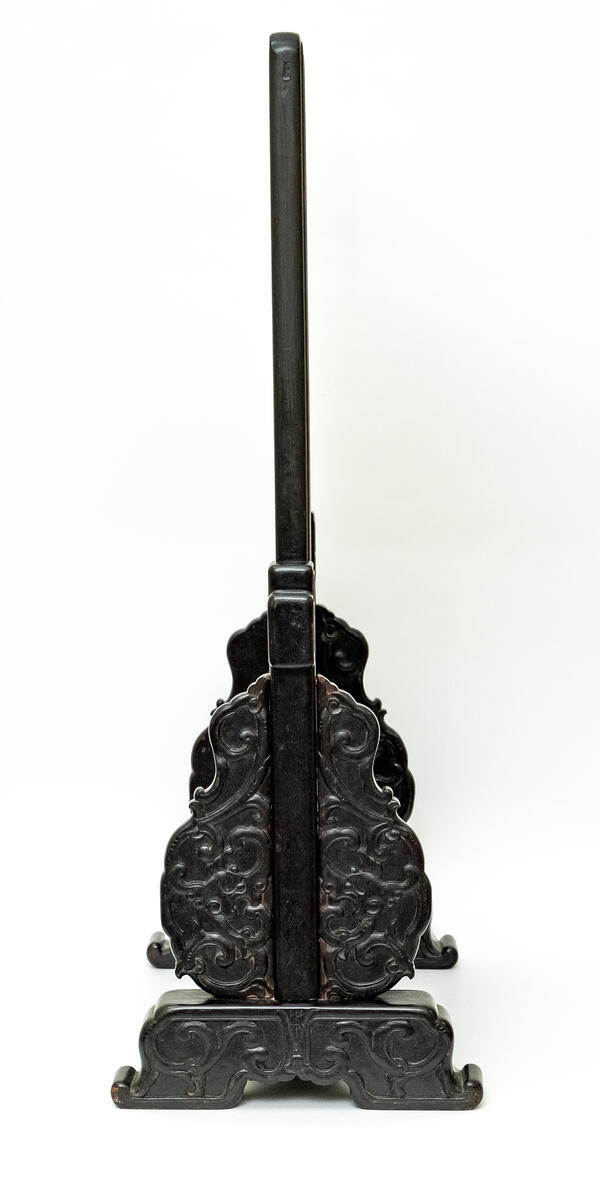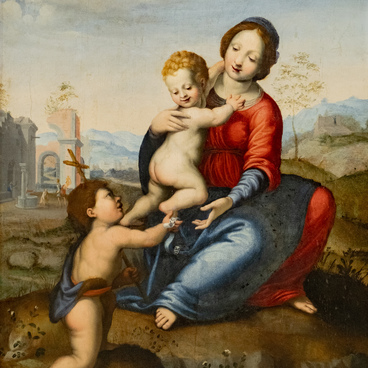A Chinese table screen is presented in the collection of the Sakha Republic National Art Museum in the section “Art of the East.” The composition of the screen is multi-figured, inlaid with mother-of-pearl and ivory playing in different colors. The screen depicts a fantasy landscape with pink and white clouds, thickets of trees, towering cliffs and curiously shaped stones. There are buildings with characteristically curved roofs and an arched bridge spanning the river. The artist sought to convey their idea of nature, the laws of the universe, and human’s place in life through the landscape.
The images are tiny; on the dark background of the screen, bright silhouettes of mythological characters in long folded robes are perceived as decorative motifs. On the right, on the second floor of the pagoda, there is the hostess of this wonderful place, Xi Wang Mu, gazing at her guests from above (she is usually depicted with a large hairpin in her hair). In late Chinese myths, this beautiful goddess, the owner of the potion of immortality, lives on Mount Kunlun with hanging gardens in which peaches of immortality grow. These miraculous fruits take nine thousand years to fully mature. On the third day of the third month, the “Queen Mother of the West” hosts a feast at which she treats her guests with magical peaches.
Among the guests, the eight immortals are recognized by their magical attributes — legendary heroes of the Taoist teaching which seeks purity of existence and naturalness of life. On the shore, He Xiangu walks among the trees with a large white lotus flower on a long stem, symbolizing purity. She is the patroness of the hearth, bestowing happiness in family and marriage. Next to her is the head of the eight immortals, corpulent Zhongli Quan, with a bare stomach, holding in his hand a fan that brings the dead back to life and grants longevity. To their right is the handsome youth Han Xiangzi, playing a magical jade flute, the sounds of which make everything around blossom. Walking ahead is the student Lü Dongbin with a pointed head, holding a vessel with a basket. Behind them is the elder Laozi, the legendary founder of philosophical Taoism, sitting on a buffalo. He is accompanied by a disciple carrying the banner of victory of the Tao teaching. Above, near the rocks, the oldest and most prudent Zhang Guolao rides on a white donkey with a bamboo clapper — he is a foreteller of the future, a patron of marital happiness and childbirth.
Such screens were placed on the table to protect
the flame of candles from the wind, at the same time serving a decorative
purpose.


